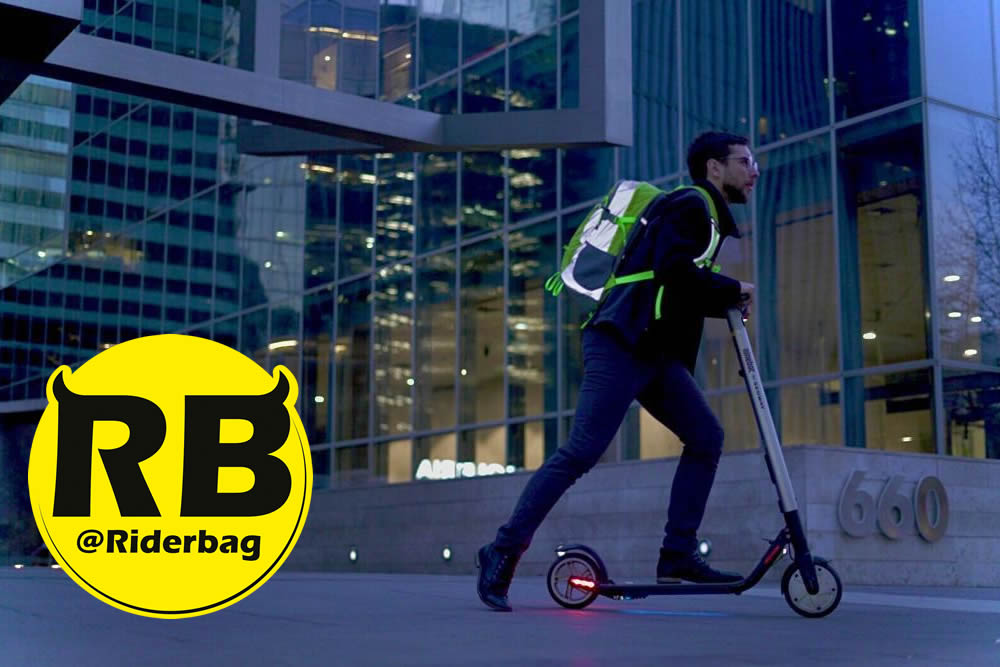Are Electric Scooters Dangerous? What We Know So Far.

Are Electric Scooters Dangerous? What We Know So Far.
For many of us, the electric scooter boom seemed to happen overnight. One day our downtown sidewalks were filled with pedestrians, the next they were stuffed to the gills with hundreds of Birds, Limes, Spins, and Lyfts dropped off by rental companies looking to cash in on the electric personal vehicle (PEV) boom.
On the one hand, it’s easy to argue in favor of electric scooters. They’re relatively inexpensive to operate, relatively easy to hop on and ride, and for every commuter opting to scoot their way around town, there’s one less car on the road slowing traffic or belching out harmful emissions.

On the other hand, there’s no denying the “electric scooter problem” either. A lack of laws, regulations, and standards can transform the streets of any city into a wild west of two-wheeled chaos, with scooters flying through traffic with zero regard for stop signs, right of way, or the general safety of others.
So are scooters really as dangerous as they seem, or does it all come down to the person riding one? To answer that question, let’s take a look at the data behind the problem, as well as what you should look out for to make your time on two wheels as safe as possible.
What Does the Data Say About the Safety of Electric Scooters?
Electric scooters are a relatively new phenomenon, having first hit city streets around 2018 with the introduction of the dockless scooter from brands like Bird and Lime. Naturally, that means the data we have on scooter safety is limited, but there are a few good studies out there we can look to for objective data.
The most relevant comes from the United States Consumer Product Safety Commission (CPSC), which was published just a few months ago. This study looked at common patterns between e-scooters, hoverboards (powered skateboards), and e-bikes between 2017 and 2022, pulling data about emergency room visits from a nationwide sampling of hospitals.

Two striking data points emerged from this study. The first is that electric scooters account for the lion’s share of overall emergency room visits, making up 47% of the total cases between all three modes of transportation.
The second is that e-scooter-related injuries and deaths have continued to increase year-over-year, while both hoverboard and e-bike numbers have either remained fairly consistent or seen a regular decline.
So what gives? What makes scooters so much more prone to accidents? Here’s our take after digging through the data.
What Makes Riding Electric Scooters Dangerous?
Clearly there’s a strong argument to made that electric scooters can be dangerous. While the current published information is limited, trends strongly suggest that e-scooters are more accident prone that other alternatives, so lets take a look at why that is and what we can do about it.
Riding without Helmets and Safety Gear
The findings of the CSPC study were so alarming that the organization decided to conduct a follow-up “special study” focused narrowly on electric scooters to help determine the likely causes of these injuries. One of the most common elements they were able to identify was that the majority of injury cases (51%) weren’t wearing any safety gear whatsoever.
Of the 51,700 estimated ER visits, only 13% of the injuries were sustained while the rider was wearing a helmet. This makes sense because while both motorcycle and bicycle culture is heavily pro-helmet, the seemingly casual nature of motorized scooters may lead new riders to believe wearing a helmet is overkill.

We’ll also point out that scooter rental companies don’t provide helmets for riders, and many states don’t even require helmets to legally operate scooters on public roads. The laws and regulations vary wildly between states (or even cities), but helmet requirements are rare, especially for riders 18 years or older.
The study also showed similar findings when it came to visibility. Fewer than an estimated 3% of scooter injuries happened while riders were wearing reflective clothing, which makes a strong argument for high-visibility gear as a preventative measure.
Other Drivers
Another important takeaway from the CPSC study was that the leading cause of fatalities across all methods of micro mobility was motor vehicle accidents. Of the 233 fatalities reported between 2017 and 2022, a whopping 58% were attributable to collisions with other motor vehicles.
This number was particularly pronounced for electric scooters, where 68% of reported fatalities resulted from motor vehicle collisions. Whether these fatalities were directly attributable to insufficient safety gear, insufficient visibility, or some combination of the two is unclear, but considering the impact of helmets and reflective clothing against injuries, it seems likely this could be the case.

Lack of Clear Laws & Regulations
Most folks aren’t familiar with the laws governing electric scooters. To illustrate this point, just take a moment and ask yourself the following:
- Are electric scooters street-legal in my area?
- Are helmets required to ride e-scooters on the road?
- Can I ride my electric scooter on the sidewalk?
- Do I need a driver’s license to ride an e-scooter?
These are just a few examples of the complex issues surrounding scooter regulations, and no two states are exactly alike in how they define or regulate e-scooters. In our experience, there’s also been a lack of effective communication surrounding these regulations, which makes it harder for electric scooter and automobile owners to know how to interact with one another.
We often see e-scooters on streets, in bike lanes, and on sidewalks, often within the same city block. Problems like this, combined with the prevalence of scooters and the struggle to regulate them, has led many local authorities to outlaw them entirely within city limits.
We recommend checking your local laws and regulations at minimum before purchasing an electric scooter of your own. Even if e-scooters aren’t outright banned in your area, the rules may be so strict that they outweigh the potential convenience of commuting on one in the first place.

Small Wheels, Hard Tires
Lastly, we’d like to take a moment to acknowledge some of the inherent limitations of many popular electric scooters. The main issue we’ve experienced when riding scooters in our own cities comes from their inability to handle imperfections on city streets, whether that’s curbs, potholes, loose gravel, or uneven grading.
The prime culprit for these handling issues are the wheels and tires found on most electric scooters. Because scooter tires are much smaller and much less forgiving than motorcycle or bicycle tires, even small bumps can be enough to lose control on public roads.
This is why you’ll typically see either 19” or 21” front wheels on off-road motorcycles: larger wheels roll over obstacles easier than smaller ones. A very small handful of consumer electric scooters sport wheels as large as 16”, but the overwhelming majority are made with wheels measuring 10” or less.
We’ll also point out that most e-scooters utilize solid, non-inflatable wheels as well as fully rigid chassis that lack any suspension whatsoever. Many owners prefer this approach because it makes for less maintenance and longer-lasting components, but it also translates to rough handling over less-than-perfect pavement, which can also lead to accidents.

Verdict: Are Electric Scooters Really Dangerous?
Based on the available data, it seems undeniable that electric scooters can be a dangerous way to get around town. While much more research needs to be done to nail down the root causes, scooter riders appear to be much more prone to injury than other alternative modes of transportation, particularly when sharing public streets with motor vehicles.
As if the case with any form of two-wheeled travel, we highly recommend doing everything you can to improve your chances out on the road. Preventing accidents starts with highly visible clothing and gear, while preventing injuries comes down to proper safety equipment like a DOT-approved helmet and impact-resistant clothing.
Ultimately the decision is yours, and different cities are more “scooter-friendly” than others. At minimum, you should familiarize yourself with the local laws wherever you’ll be riding, and “dress for the crash” rather than simply dressing for work.
Where to start? We highly recommend the Riderbag Reflective scooter backpack. Not only will it keep you visible day and night, but add a spine protector for extra protection. Click the image below and start riding safe!





Leave a comment